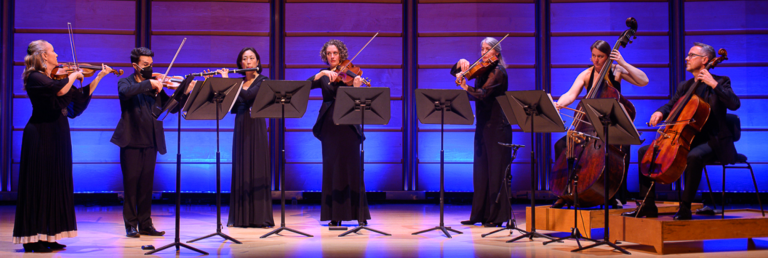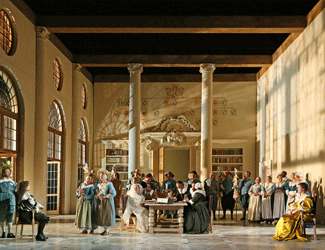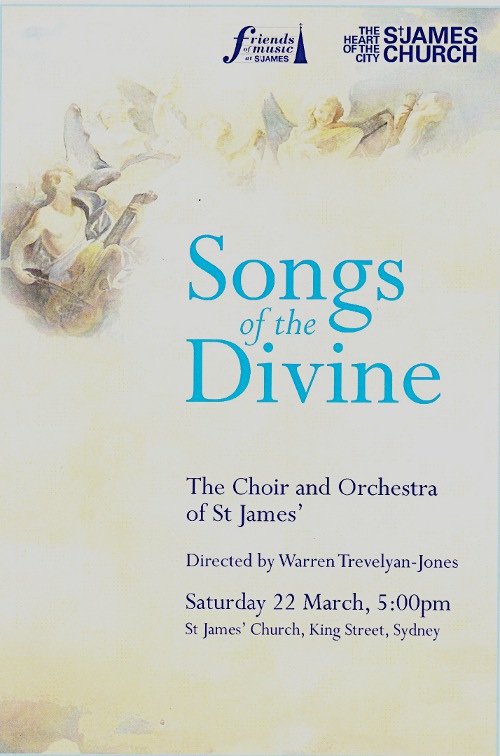Album Review: Nemanja Radulović BACH

It’s hugely gratifying to be able to spend the best part of an hour immersed in the music of a single composer performed expertly with a fresh and considered twist.
Serbian violinist Nemanja Radulović’s new release on Deutsche Grammophon (479 5933) entitled Bach is just that. Six works by Johann Sebastian Bach with a concerto for viola and orchestra possibly by his youngest son Johann Christian Bach for which Radulović, who studied the cello and viola as well as the violin, takes to the viola.
One look at Radulović with his mane of tousled hair, trend-setting sartorial style and deconstructed violin bow on the cover f the album, and it is obvious that this is an individual who is driven to think outside the square. Not content to rely on his mesmerising technique and deeply sensitive musical insights, Radulović has re-invigorated these works in collaboration with several colleagues resulting in bracing new arrangements. The seven works and thirteen tracks on the album offer complete engrossment in the music of JS Bach and encompass a range of forms in which he composed, from concerti to single movements from larger works, solos and arrangements.
Opening the album is the popular Concerto for two violins, strings and basso continuo, BWV 1043. Radulović is joined by his childhood friend violinist Tijana Milošević and the 15 piece ensemble Double Sens. The two solo violins create a marvellous interplay, standing out in bright and sweet-toned relief to the continuo ensemble. It’s a heart racing rendition which loses none of its clarity and detail. I am reminded of the performance of Nigel Kennedy another enfant terrible of the violin who plays with similar verve, in contrast to the more measured versions of the elder statesmen Zuckermann and Perlman or Oistrakh and Menuhin.
Radulović delivers a searing performance of the Toccata and Fugue BWV 565 in an arrangement from the original version for organ by the Serbian composer Alexandar Sedlar. Performed with the suitably titled 6 piece ensemble Les Trilles du Diable – Devils Trills. Radulović pulls out all the stops, so to speak with pizzicato, compound stops and fiery technique in adapting the notes that are perhaps even harder to perfect on a stringed instrument than on a keyboard. Transcriptions very often reveal aspects of writing that have become hidden or taken for granted. How does this version compare with the might of the original organ version – and should it be compared or allowed to stand alone as a force of its own? It is an intensely personal decision.
Three other single movement works are featured, the Gavotte from the Partita No 3 for violin solo BWV 1006, and two more arrangements by Sedlar, the Air from the Orchestral Suite No 3, BWV 1068 and the Chaconne from the Partita No 2 for violin solo BWV 1004.
The Chaconne is a daunting piece, credited by Menuhin as being “the greatest structure for solo violin that exists” and which Joshua Bell described as “one of the greatest achievements of any man in history.”
There are many transcriptions of the original for various instruments, including organ, cello, guitar and Busoni’s variations for piano. Stokowski transcribed the piece for full symphony orchestra. Sedlar’s arrangement is for violin and chamber ensemble, of which Radulović observes “Sedlar’s ….arrangement….reveals a very different set of harmonic possibilities. When you play the original, you can hear the harmonies in your head, but Aleksandar’s arrangement offers another vision of the work, showing that Bach’s music has endless possibilities.”
It’s a bravura performance. Time and again Radulović takes us to the edge of the precipice building tension with tempo and texture, resolving ultimately in a majestic yet gentle finale.
Radulović takes the solo line with Double Sens for the JS Bach’s Concerto for Violin, Strings and Basso continuo in A minor, BWV 1041, exciting in its contrasts of light and shade, lace and tapestry.
JC Bach’s Concerto in C minor for Viola and orchestra is an interesting inclusion. Described on the CD as a reconstruction by the 20th century French violist Henri Casadesus, debate continues around many of the works by Henri and his brothers Francis and Marius as to which were genuine works by 18th century composers and which were written by the brothers and passed off as older classics. Whatever the case, the selection of this piece is an opportunity for Radulović to demonstrate that he is as brilliant on the viola as he is on the violin. The lower soundscape is a pleasant contrast and the piece has many similarities with the featured concerti of JS Bach whilst also progressing to the emerging classical style of the 18th century.
Bach’s music has indeed, endless possibilities.
Shamistha de Soysa for SoundsLikeSydney©






